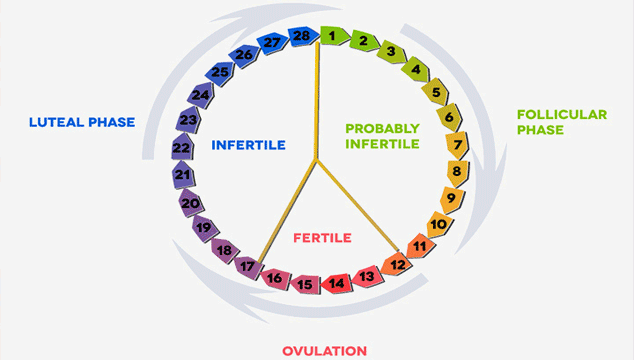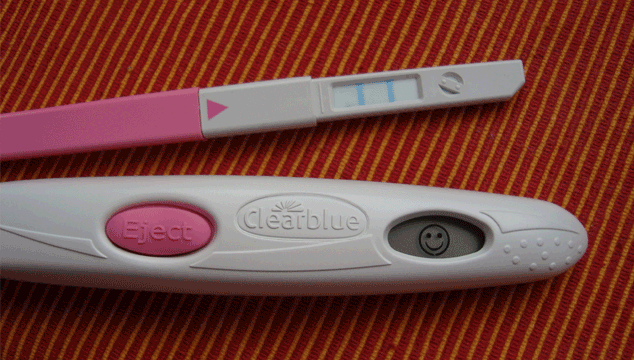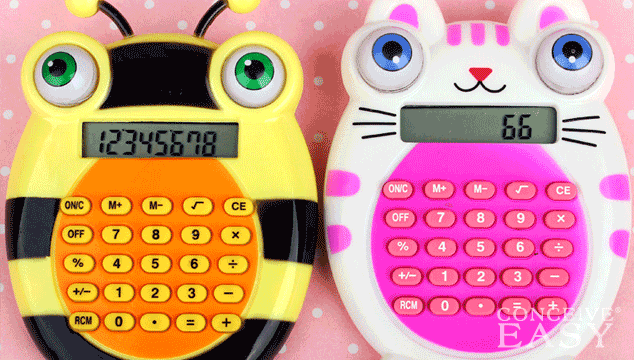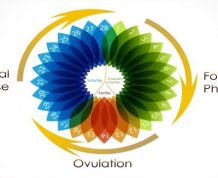![]() The information provided by our expert should not constitute a diagnosis of your condition. Always consult a medical practitioner or healthcare provider for a formal diagnosis. By making use of this content, you agree that ConceiveEasy and the expert assume no liability.
The information provided by our expert should not constitute a diagnosis of your condition. Always consult a medical practitioner or healthcare provider for a formal diagnosis. By making use of this content, you agree that ConceiveEasy and the expert assume no liability.
If you are trying to get pregnant, your first stop, before doing anything else, should be to learn how to track your fertility and ovulation. It’s the single most important thing that you can do for conception and your overall fertility. So, why is knowing your fertile days so important? Claim Your 20 Free Ovulation Tests – Click Here
The thing is, women release one egg (sometimes two- that’s how twins are made!) every single month from their ovaries. That egg, once released, only lives for about 24 hours before it dies. This 24 hour period from when the egg is released to when it begins to die, is the ONLY time during a given month that a woman can get pregnant. No pressure, right?
If you don’t know when you ovulate, you will be totally in the dark when it comes to getting pregnant.
If you don’t know when you ovulate, you will be totally in the dark when it comes to getting pregnant. You will absolutely be going on pure luck when it comes to when to have sex and when is your most fertile time. It’s crazy when you think about it this way, isn’t it?
It’s crazy when you think about it this way, isn’t it?
Women have to figure out when they ovulate and then they can time sex better so that they will be able to have the best chance of getting pregnant. Fortunately, sperm can live for up to five whole days in the vagina, so if you have sex before ovulation, the sperm can actually be ready for when the egg is released. This way, it gives you an even greater chance of getting pregnant in a given cycle.

If you are new to trying to conceive and new to tracking your fertility, the whole thing might seem very overwhelming and more than a little crazy. Luckily, one of the best things about living in this time where we have access to so much different technology and things of that nature is that there are tons and tons of options for calculating and tracking fertility.

Today, we are going to go over many of those different options, including online fertility calculators, fertility apps, basal body temperature charting, ovulation predictor tests, and more. Read on if you are ready to learn all about tracking your fertility and finding the best way to know your fertile days.
Read on if you are ready to learn all about tracking your fertility and finding the best way to know your fertile days.

Doing a quick Google search will turn up a ton of online fertility calculators. These calculators can help you to have a better idea of when you will ovulate and when your most fertile days are. However, these calculators need a little bit of help from you. They can’t just work on their own. Most of these calculators require you to enter at least a little bit of information before they can try to calculate your most fertile days.
The most common information that these calculators need is things like the date of your last menstrual period, and the average length of your cycle. (This means do you usually have your period every 28 days, 24 days, 30 days, etc.
Many calculators will also ask you for the length of your luteal phase, which many women do not know. What on earth is a luteal phase, you ask? It’s the time from ovulation to the start of your period and usually clocks in at an even 14 days.
What on earth is a luteal phase, you ask?
Some of these calculators will also ask you if you would like to try for a boy or a girl, and tell you what to do in those particular situations as well. Once you enter all of this information, the fertility calculator will tell you your most fertile days. Some of the more detailed calendars will also tell you when to take an ovulation test, days to abstain from sex, days to take a pregnancy test, and more. Wow!
The only negative thing about these online fertility calculators is that they only go off of the information that you give them. They don’t actually go off of your body. If you forget the day of your last period, or if your ovulation day falls on a different day than what is expected (as bodies tend to do!), your calculator will be off. This means to take all of the information from a fertility calculator with a grain of salt and remember that they can not always be 100% accurate.
This means to take all of the information from a fertility calculator with a grain of salt.

Along the same lines of online fertility calculators are fertility apps made for your smartphone. There are a ton of these out there, some are paid and some are free. Much like the online fertility calculators, these fertility apps ask you to fill in some important data every day. Things like when you start your period, whether or not you get a positive ovulation test, days you have sex, and usually any symptoms that you might be feeling.
While these apps are not always super accurate, since they are based off of information that we enter ourselves (and let’s be honest, we don’t always do that!), they can be a little more effective since we might be more apt to enter information into them daily, as we all always have our smartphones nearby.

We might be more apt to enter information into them daily, as we all always have our smartphones nearby.
You can also set the apps up to send notifications and reminders to help you to remember to enter info. These apps are very popular and many women use them to try to get an idea of their fertile days. They can be helpful, but I would recommend that you use them in conjunction with another type of fertility tracking method.

Basal body temperature charting is another common and popular way of fertility tracking that lots of women use. This method is a little bit more “high maintenance” than other methods. This is a turn-off to some women, but the added work that it entails can actually mean more accurate results. First of all, let’s explain what basal body temperature actually is. Basal body temperature is the temperature of the body at rest. You can buy a special thermometer called a basal body thermometer, which measures temperature in great detail.
To track your basal body temperature, you should use your thermometer to take your temperature every single day, before you even get out of bed in the morning. This is to ensure an accurate reading before you even get out of bed. If you take your temperature at different times every day, or after you have already gotten started for the day, you will not get an accurate reading, and your chart will be off. Each day, you need to write your temperature down. You can even chart your temperature every day on a special chart. You will have to use the chart and the thermometer every single day.
After about a month or so of using the thermometer every day, you will be able to see a very clear pattern in your temperature, and how it rises and falls. You will notice that there is a temperature spike. The temperature spike means that a surge of LH is present, and that your body should ovulate within 24 hours. If you pay attention to the spike, you can plan to track your fertility that way.
• Take your temperature every day, before getting out of bed.
• Write your temperature down on your BBT chart.
• After a month of temperatures jotted down, you will see a clear pattern.
• A temperature spike means your body will ovulate within 24 hours.

Ovulation predictor tests are also one of the most popular things that women can use to track their fertility. Ovulation predictor kits are available online and at most any big box store or drug store. They work very similarly to home pregnancy tests. The tests use a woman’s urine to try to detect the LH hormone, which indicates that ovulation is coming soon. Two dark lines means you are ovulating – time to baby dance!
Two dark lines means you are ovulating – time to baby dance!
You can use an ovulation test every day until you figure out when your ovulation should be happening. After you get the hang of using ovulation tests, you will be able to know the approximate time frame for ovulation, so you don’t have to waste time and money taking a test every single day. But you still may need to do so for upwards of a week to make sure you don’t miss the positive!

If you are not familiar with how ovulation predictor tests work, let us explain. The ovulation tests have two lines on them. One line is a control line, and that line will be dark all of the time,every time you use one of the tests. The other line is the test line. It will get darker and darker each time you take a test, the closer that you get to ovulation day. When the test line is as dark or darker as the test line, that is an indication that ovulation will occur within the next 24 hours.
If you are just starting out, the best way possible to track your ovulation is probably an ovulation predictor test. They are cheap, available very easily, and very simple to use. They are a great starting point for women who want to track their fertility and learn how to tell if they are ovulating.

There are, in fact, some other ways to track your fertility and ovulation. The truth is, many women just simply don’t know about these things. One way to track your ovulation and fertility completely naturally is to learn to check your cervix. Checking your cervix is one of those things that might seem a little bit weird or strange at first, but it is something you will get used to. To do this, you must insert a clean finger into your vagina, and feel for your cervix. You will have to feel for your cervix and see how it feels.
If you are not close to ovulation, your cervix will feel high, closed, dry and hard, similar to touching your nose.
Getting used to checking your cervix this way can be difficult to do, so give yourself some time and be patient while you get used to it. Over time, it will become like second nature, and you will be able to tell very quickly and easily whether or not you are close to ovulation.

Another way to check your body for ovulation is to get used to checking and watching your cervical mucus. Cervical mucus is very telling when it comes to ovulation. Cervical mucus goes through many changes over the course of a woman’s monthly cycle. What you are looking for when it comes to ovulation is egg white cervical mucus. As you approach ovulation, your cervical mucus will begin to resemble the consistency of egg whites. That is, clear, stretchy, and sticky. Just like egg whites!
As you approach ovulation, your cervical mucus will begin to resemble the consistency of egg whites.
Once you begin to see this type of cervical mucus, you can believe that it is getting near ovulation time and that you will soon be ready to conceive. Cervical mucus tracking is another way of charting fertility which will probably be a little strange to get used to at first, but over time will become second nature.
You will just know what to look for and what to notice, and before too long you will be a pro! Of course, cervical mucus changes many times over the course of a cycle, and going by cervical mucus or cervical position alone is not enough.

Once you learn how to track your ovulation and calculate your fertility, it will become second nature to you. It might seem hard at first but really it won’t be too hard once you get used to it. There are a ton of aspects that go into getting pregnant, but really, tracking your fertility is definitely the most important one.
There are so many different fertility calculators out there, it can be hard to find the one that best fits you. Many women even choose to use a combination of methods to track their fertility, such as using ovulation predictor tests along with apps or checking cervical mucus. Whatever works best for you, use it!
Whatever works best for you, use it!
If you still have questions, or you are not getting anywhere with fertility calculators, as in, you are still not getting a positive result, it’s okay to go ahead and talk with your doctor. Your doctor might have additional tips and tricks for you to use, but your doctor also might be able to recommend that you have some tests done that could help you to track your fertility as well. Doctors are a great asset for women who are trying to conceive and need how to get pregnant tips, so don’t take that aspect for granted. Be sure to reach out and get the help you need!










Comments